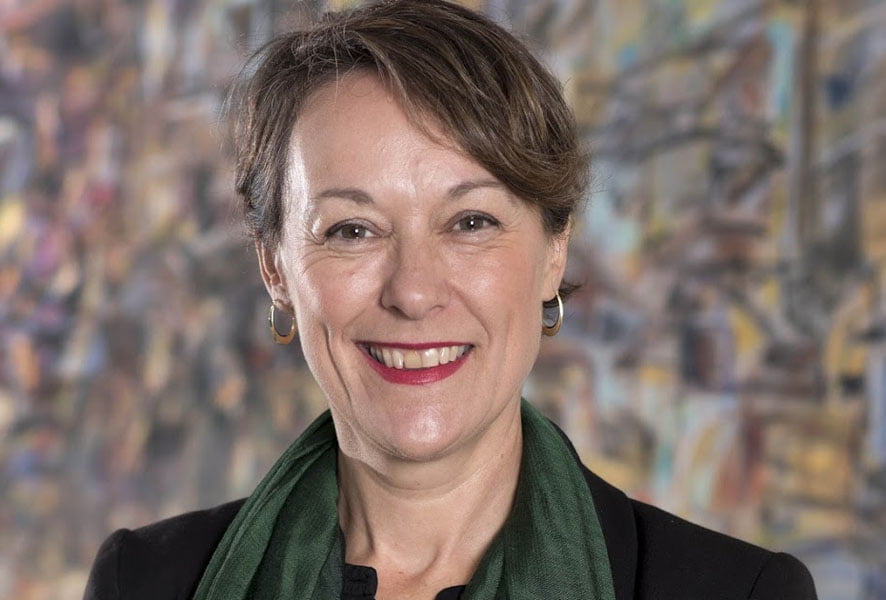One of the most effective ways for Australia to engage with the Indo-Pacific region on international aid is through external collaboration, according to Department of Foreign Affairs and Trade first-ever chief innovation officer, Dr Sarah Pearson.
“You can look at the traditional people, who you usually go to for answers, or you can actually look around the world and find some really fantastic and different answers you’d never thought of,” said Dr Pearson.
“DFAT is really keen to partner with other people to deliver impact. Yes, we could deliver a certain amount on our own but by partnering with others we can leverage what we’ve both got.

“How do we work with these sorts of companies that are trying to do good things that we want to do as well, so we can do more and that’s really important.”
Partnering and collaborating with external organisations is one of three key pillars of DFAT’s Innovation Strategy.
Released last week, the three-year strategy is part of DFAT’s commitment to “achieve impact through applying new tools and approaches, scaling capability and culture, empowering DFAT staff, and utilising innovation.”
It builds on DFAT’s first innovation strategy that was launched three years ago.
DFAT secretary Frances Adamson wrote this updated version of DFAT’s Innovation Strategy which is focused on the need to change the agency’s mindset.
“Innovation is about thinking and acting in ways that will make DFAT a global leader in problem-solving and seizing opportunities,” she wrote.
“It is the practice of trying new things, adapting what did not work and then trying again until we have found an approach that works significantly better than current practice.
“It requires us to be open to new knowledge and practice, recognising that we may need to source outside skills and expertise to achieve our objectives.
“External collaboration will also lead to inclusive private sector-led growth and support aid for trade opportunities.”
To date, DFAT has collaborated with the likes of Google, Atlassian, and MIT for solutions.
Dr Pearson is also participating in this year’s Google.org Impact Challenge as a judge that will award 10 winners a total of $5.5 million in grant funding for their projects designed to tackle social challenges.
She is optimistic this initiative will present DFAT with new solutions for international aid.
“We’re really trying to grow the innovation capability in our region.
“It’s all well good that we can send people overseas and give people money to do it but why not actually build the innovation infrastructure, so that the economies in our region can thrive from a social impact, as well as from an economic perspective,” said Dr Pearson.
“I think we really need to encourage our startups in Australia to get into the export side of things.
“These sorts of Google Impact Challenges are one way of helping them to do that.
“It can help startups in this country solve challenges, but it also gets them to think bigger picture and global.
”The other two pillars of DFAT’s Innovation Strategy are experimenting with projects and approaches and learning from internal and external work.
DFAT’s startup mentality began three years ago when its $140 million innovationXchange (iXc) “ideas hub” was launched.
IXc was developed to encourage the agency to develop solutions to tackle foreign aid by drawing on expertise from government, the private sector, academic institutions, and NGOs.
Since its launch, DFAT has developed several programs under the initiative including a:
• $15 million Scaling Frontier Innovation program designed to support social entrepreneurship in the Indo-Pacific;
• $10 million Aus4Innovation program that is being undertaken with CSIRO’s Data61 to support the Vietnamese government with tackling poverty;
• $30 million ASEAN-Australia Smart City initiative designed to provide training and technical assistance to develop smart city infrastructure.
DFAT has also supported the scale out of individual businesses such as Tupaia, an online platform designed to track the availability of medical supplies.
With DFAT support, Tupaia has now expanded its coverage to six countries in the Pacific.
“If you think about the value proposition that government departments like DFAT have, it’s very much our people, network, and relationships.
We know governments in other countries intimately and we also know the industry over there,” said Dr Pearson.
“We’re a great safe place to try and help the scalability of companies that we are looking after because we’ve relationships in different countries around the world.
“We’re also working to build the innovation infrastructure in the region.
“We’re investing in entrepreneurs. We are building the capabilities of incubators and accelerators, setting up brokerage and attracting more money from region.”
Dr Pearson said all of these initiatives serve as part of a much-needed innovation infrastructure that Australia currently lacks.
“I’d really like to see Australia have a bit more of a serious framework. We know the Innovation Science Australia has set out four or five pillars, but I haven’t seen a real framework for all the bits and pieces,” she said.
“One of the reasons we want to build the innovation infrastructure is obviously to lift people out of poverty within our region.
“The other is because you build sustainable economies that we can trade with, so you’ve got peace, prosperity and – for us – trading partners, which is really fantastic.
”She believes that once there is more cohesion between government, the private sector and academia, the country is also likely to attract more VCs.
“We need to join up all of our ecosystems in Australia because it’s so fragmented and competitive.
“Competition is great. You need competition but the piece that we’re missing at the moment is that we need collaboration as well.”
Do you know more? Contact James Riley via Email.

